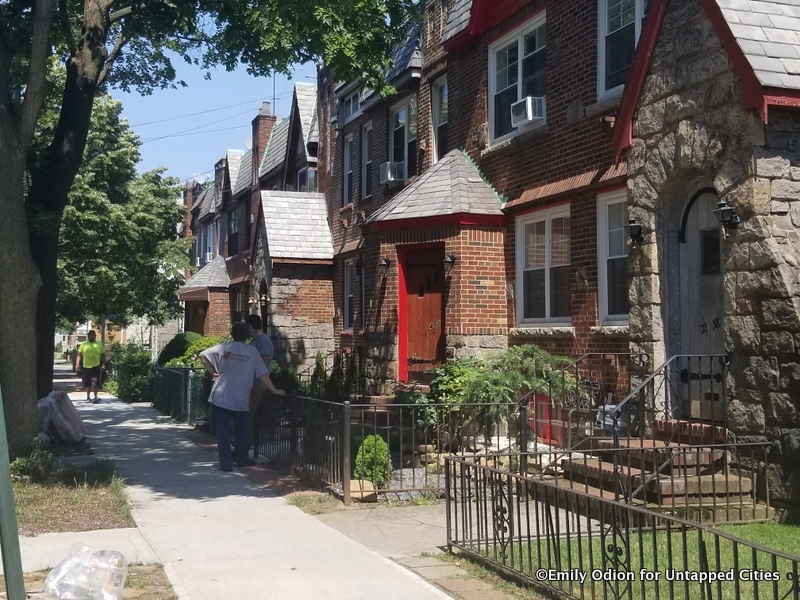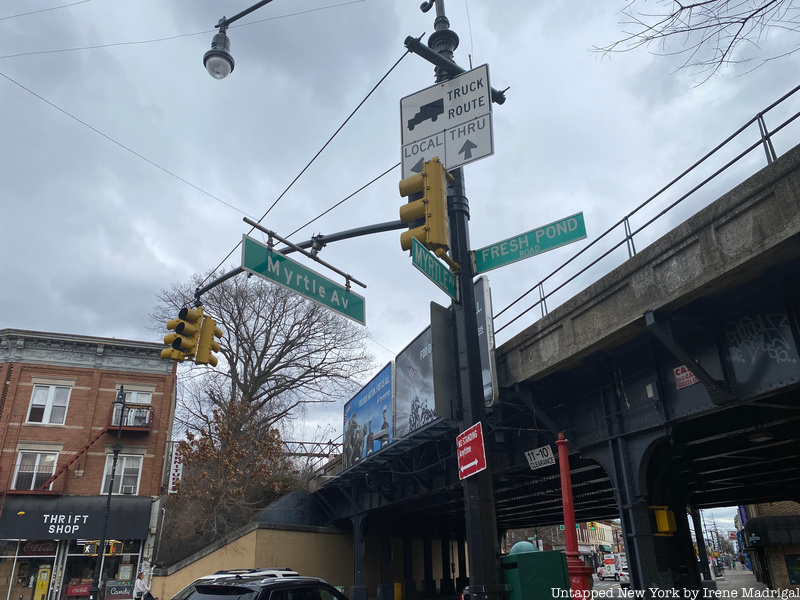
Located along the border between Brooklyn and Queens is Ridgewood. Like neighboring Bushwick, Ridgewood’s land was initially the home of the Lenape Native American Mespachtes tribe, before becoming part of Newton, one of the three initial towns formed in Queens, and being settled by the British. For most of the 19th century, Ridgewood remained a largely rural farming area, with residents growing crops for sale in Brooklyn and Manhattan markets. For the most part, development to the area during this time period consisted of picnicking locations, beer gardens, racetracks, and amusement areas for Bushwick residents. Industrialization began to pick up speed following the extension of the elevated Myrtle Avenue subway line to Ridgewood in 1889, the creation of an electric trolley line in 1894, and the completion of the Queensboro Bridge in 1909.
From 1905 to 1915, much of the neighborhood’s housing stock was constructed — mainly occupied by German and Eastern European immigrants. The neighborhood can be visually distinguished for its brick exposed construction characteristic of the early 20th-century row houses built in the area. More than 5,000 buildings in Ridgewood were designed by Louis Berger & Co. during the early 20th century, with the neighborhood’s residential sectors remaining largely untouched ever since. Today, visitors to the neighborhood can stroll through one of its ten historic districts, visit the St. Matthias Catholic Church where scenes from The Irishman were shot, or explore the Ridgewood Reservoir’s lush East Causeway. With a contentious past with Brooklyn and a memorial to fallen World War I soldiers, Ridgewood has many fascinating secrets.
1. Fresh Pond Road remains one of Ridgewood’s oldest streets

In Ridgewood today, Myrtle Avenue, Metropolitan Avenue, and Fresh Pond Road remain the neighborhood’s oldest streets, first used by farmers to take goods to the market. What is now Fresh Pond Road began as an old trail for Native Americans living in present-day Maspeth, which derived its name from the Mespeathes tribe. Members of the Mespeathes tribe would use the road to travel from Brooklyn to Jamaica Bay where they fished and clammed before returning home to use collected seashells to make wampum, a form of native currency. Upon the arrival of colonists to Queens, the trail came to be known as Kill’s Path on account of it being a site for battles among Native American tribes.
In the 1800s, the trail, having since been incorporated into the town of Newton, was renamed Fresh Pond Road to reflect two small ponds that used to occupy an area east of the roadway and to the north of the Mount Olivet Crescent but were drained and filled in the 1900s. Originally running from Jamaica Avenue in Cypress Hill to 69th Avenue in Ridgewood, Fresh Pond Road’s current route was shortened during the 20th century to run from Flushing Avenue in Maspeth to Myrtle Avenue. The old portion of Fresh Pond Road from 69th Avenue to Jamaica Avenue was transformed into Cypress Hills Street.





